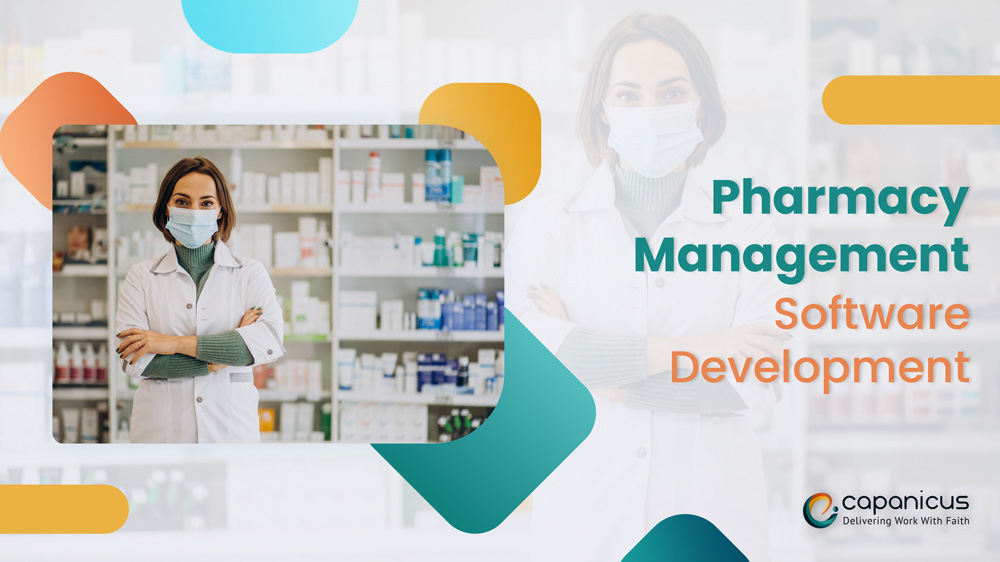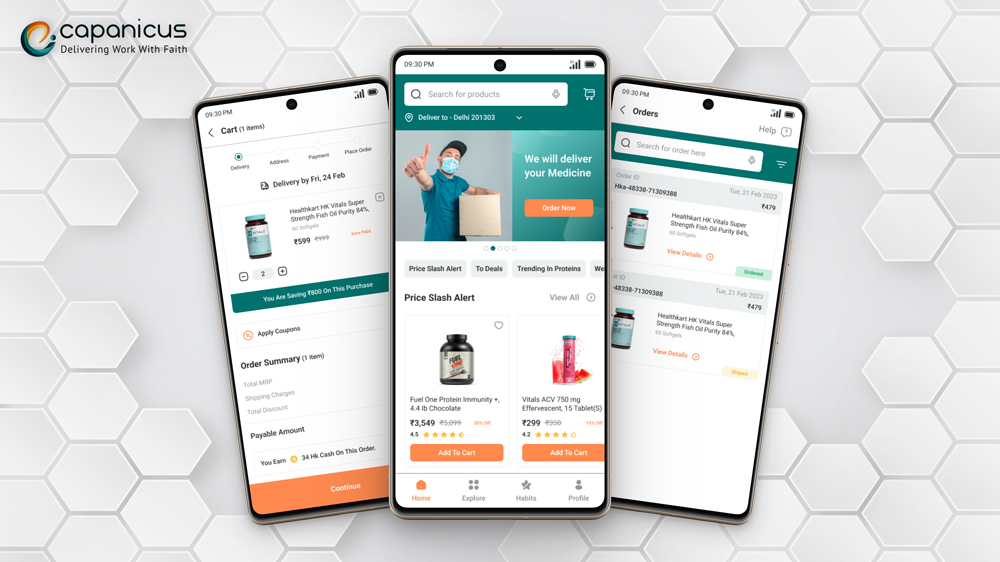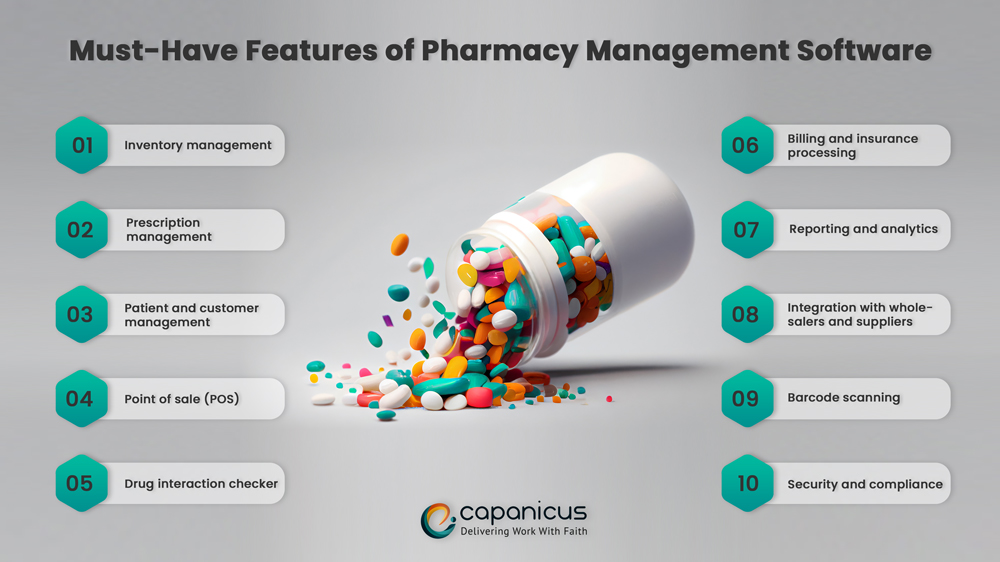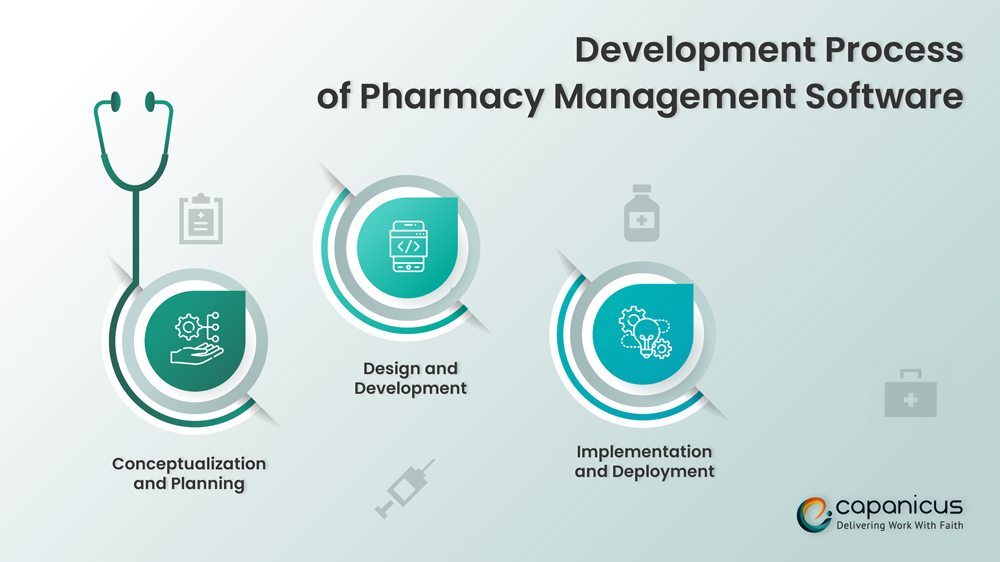What is Pharmacy Management Software?

In today’s fast-paced healthcare industry, technology has become increasingly critical in enhancing patient care, optimizing workflow, and minimizing errors. One such technological innovation that has revolutionized pharmacy operations is Pharmacy Management Software. This comprehensive software solution has emerged as a game-changer, empowering pharmacists with advanced tools to streamline their daily tasks, enhance efficiency, and ultimately improve healthcare delivery. At its core, Pharmacy Management Software is a dynamic and intuitive system designed to seamlessly handle various aspects of pharmacy operations. From inventory management, prescription processing, and patient information management to billing, reporting, and compliance tracking, this software encompasses the entire spectrum of a pharmacy’s functions. By consolidating all these tasks into one unified platform, pharmacists can stay organized and focused, freeing up valuable time to devote to patient care.
To further enhance patient care, Pharmacy Management Software incorporates features that enable pharmacists to easily access and manage patient information. From medication histories and allergies to chronic conditions and dosage instructions, this software provides a comprehensive view of a patient’s healthcare journey. Armed with this valuable insight, pharmacists can offer personalized medication counseling, recommend suitable alternatives, and provide essential guidance to patients, further improving medication adherence. In addition to day-to-day operations, Pharmacy Management Software Development company also offers advanced reporting and analytics functionalities. Pharmacists can generate insightful reports on medication usage, sales trends, and patient outcomes, enabling them to make data-driven decisions to optimize their business strategies. By understanding market demands and patient preferences, pharmacies can enhance inventory stocking, identify areas for improvement, and ultimately drive better healthcare outcomes.
6 Benefits of Pharmacy Management Software

This offers numerous benefits for pharmacies in streamlining their operations and providing optimal patient care. Here are six key advantages of using pharmacy management software:
- Enhanced Efficiency: It automates various tasks involved in pharmacy operations, such as medication dispensing, inventory management, and billing. This automation saves time and reduces the chances of errors, allowing pharmacy staff to focus on more critical tasks, like patient counseling.
- Improved Inventory Management: Keeping track of medication inventory is crucial for any pharmacy. It provides real-time updates on drug stock levels, expiration dates, and reorder points. This allows pharmacists to efficiently manage inventory and avoid stockouts or overstocking.
- Streamlined Prescription Processing: With pharmacy software, the process of receiving, verifying, and dispensing prescriptions becomes seamless and error-free. It helps pharmacists electronically process prescriptions, cross-reference drug interactions, and ensure accurate medication dispensing.
- Enhanced Safety and Compliance: Patient safety is paramount in pharmacies. This helps in avoiding medication errors by providing alerts for allergies, drug interactions, and duplicate therapies. It also assists in adhering to regulatory requirements, such as record-keeping and reporting.
- Improved Customer Service: Enables pharmacists to access patients’ medication history, allowing them to provide personalized care and medication counseling. Additionally, automated refill reminders and online prescription order refills enhance convenience for patients, resulting in improved customer satisfaction.
- Data Analytics and Reporting: Generates comprehensive reports on various aspects, such as sales, inventory, and patient demographics. This data can be used to identify trends, make informed business decisions, and optimize pharmacy operations for better outcomes.
Must-Have Features of Pharmacy Management Software

(a) Inventory management
– An essential feature that tracks medication stock levels, manages expiration dates and generates automatic reorder alerts.
(b) Prescription management
– Allows for electronic prescription processing, storage, and retrieval. It should integrate with healthcare providers’ systems to streamline the prescription filling process.
(c) Patient and customer management
– Enables the management of patient records, including personal information, medical history, and prescription details. It should also support customer loyalty programs and facilitate customer communication.
(d) Point of sale (POS)
– Provides a secure and user-friendly interface for processing sales transactions, managing invoices, accepting various payment methods, and generating receipts.
(e) Drug interaction checker
– Alerts pharmacists to potential drug interactions, allergies, contraindications, or duplications. This ensures patient safety and prevents medication-related complications.
(f) Billing and insurance processing
– Automated billing features that streamline insurance claims processing, co-pay tracking, and reimbursements. It should support integration with insurance providers and third-party billing platforms.
(g) Reporting and analytics
– Generates detailed reports on sales, inventory, prescription volumes, and revenue. This information helps pharmacy owners analyze trends, make informed business decisions, and comply with regulatory requirements.
(h) Integration with wholesalers and suppliers
– Enables seamless communication with suppliers, automates the ordering process, and facilitates real-time inventory updates.
(i) Barcode scanning
– Allows efficient medication scanning for quick identification, inventory management, and accurate dispensing.
(j) Security and compliance
– Adheres to data privacy regulations and industry standards, ensuring secure storage of sensitive patient information and protection against unauthorized access.
These are some essential features to consider when selecting a pharmacy app service provider. However, the specific requirements may vary depending on the size and nature of the pharmacy business.
Key Technologies to Create Pharmacy Management Software
To create the software with a user-friendly interface, several key technologies and tools can be utilized. These technologies and tools ensure efficient management of inventory, sales, prescriptions, and customer information. Here are some of them:
Database: A robust database system is crucial to store and manage the vast amount of data involved in pharmacy management. It can store information about medications, patient records, prescriptions, inventory, and other relevant data.
Cloud Computing: Implementing a cloud-based infrastructure allows for efficient and scalable storage of data, enabling real-time access across multiple locations. This ensures seamless collaboration, data backup, and easy retrieval of information.
Interactive Voice Response (IVR): IVR technology can be integrated into the pharmacy software to automate routine tasks and provide self-service options for customers. It enables features like automated prescription refills, medication reminders, and general inquiries.
Analytics: Analytics capabilities help in extracting valuable insights from the data collected within the pharmacy management software. It can provide trends in medication usage, inventory management, customer behavior analysis, and sales forecasting, enhancing decision-making processes.
Payment Processing: Integrating secure payment processing functionalities ensures smooth and easy transactions for both customers and the pharmacy. This includes securely processing insurance claims, managing co-payments, and facilitating various payment methods.
Blockchain: Implementing blockchain technology can enhance security and transparency within the pharmacy management software. It can help track the movement of medications, prevent counterfeit drugs, manage supply chain logistics, and secure patient information.
By leveraging these key technologies, a pharmacy app development solution can streamline operations, enhance patient care, improve inventory management, and strengthen overall efficiency in the pharmaceutical industry.
The Development Process

The development process of a pharmacy software app involves several stages, starting from planning, design, and development, and finally, implementation and deployment.
Phase 1: Planning
Defining Project scope
It’s critical to establish the project scope up front in the pharmaceutical delivery management software development process. This involves outlining the functionalities the software will provide, the technical specifications it must fulfill, and admitting any restrictions or limitations. By doing this, you reduce scope creep and remove uncertainty by giving the development team a solid roadmap.
Identify Stakeholders
Finding the people involved in this development process is the next step after defining the scope. Stakeholders frequently include end users who will be utilizing the system daily, software developers who are in charge of creating the solution, and pharmacy owners who require an efficient management system. For the project to succeed, all partners must establish clear lines of communication. At important project checkpoints, stakeholders ought to be notified and consulted to ensure that everyone agrees.
Setting Objectives and Goals
It’s time to define the software development’s objectives and goals after identifying the stakeholders. Specific, Measurable, Achievable, Relevant, and Time-bound are the five SMART criteria for objectives. These goals will act as benchmarks and performance indicators for the duration of the software development lifecycle. They provide the development team with specific goals to strive for and closely match stakeholder expectations.
Creating a project Timeline
Maintaining project momentum and making sure every stage is finished on schedule depends on having a clear project timeline. The timeline ought to include important dates, deadlines for every stage of development, and time for unforeseen circumstances or obstacles. This well-organized strategy guarantees that the project achieves its goals within the allotted time and aids in the effective use of resources.
The foundation of the software development process for pharmacy delivery management is Phase 1. It entails defining precise parameters in the form of the project scope, identifying stakeholders and involving them, creating realistic goals and objectives, and maintaining stakeholder alignment with a carefully planned project schedule.
Phase 2: Design and Development
Database Design
Creating a solid database to safely hold all pharmacy-related data is the first step in this phase. A well-thought-out database is essential to guarantee smooth operations. It must be scalable, effective, and able to manage a variety of data kinds, such as transaction logs, inventory information, and medical records. The smooth operation of the entire system is made possible by this foundational work.
User Interface (UI) Design
The User Interface (UI) Design is the second essential component. For ease of use and customer happiness, a user-friendly and intuitive user interface is essential. The goal of this design should be to provide the best possible user experience, making it simple for users to access different functions and complete activities. In addition to visual appeal, UI design must also be practical and efficient.
System Architecture
You now need to describe the technology stack that will be used in the creation of the pharmacy management solution. The foundation of your software will be this technological stack, which determines how various parts will communicate with one another. These decisions will affect scalability, performance, and maintenance in the long run. Examples of these decisions include selecting programming languages and frameworks, as well as picking between a monolithic or microservices design.
Software Development
The next stage is to start the coding process after the database, user interface, and system architecture are in place. For consistency, developers should adhere to the specified technology stack and system design. Regular code reviews and interim tests are crucial at this phase to preserve code quality and guarantee that the development is in line with the project’s aims and objectives.
Testing and Quality Assurance
Not to mention, the program needs to pass a thorough testing step before it is prepared for distribution. This includes evaluating functionality, performance, and security using a variety of tests. The goal of quality assurance is to find any errors, performance problems, or security gaps. Making sure the software satisfies all predetermined requirements and is prepared for deployment requires completing this crucial stage.
Phase 3: Implementation and Deployment
Installation and Setup
The program can now be installed on the assigned systems following the arduous stages of development and testing. This phase entails checking that all hardware and software requirements are satisfied, adjusting system preferences as needed, and starting the program for the first time. Here, the intention is to minimize any disruption to the pharmacy’s regular operations while achieving the smoothest possible transition.
Trained Developer
A crucial element of a successful installation is ensuring that the developers have the necessary tools to run the newly implemented program. This is accomplished by thorough training sessions that go over all of the software’s features and functionalities. To guarantee the smooth operation of the pharmacy, developers should receive training in diagnosing typical issues in addition to understanding basic operations.
Data Migration
Data from the current pharmacy, including transaction histories, inventory records, and client information, must be transferred to the new system. To minimize downtime and guarantee operational continuity, this step is essential. Ensuring data integrity throughout the migration process is equally important as preventing data loss or corruption.
Ultimately, a carefully considered pharmacy management software development process might determine whether a project succeeds or fails. Capanicus takes the comprehension of every phase and guarantees a pharmacy software solution that is efficient and successful.
How Capanicus can help to build Pharmacy Management Software for your Business?
In conclusion, Pharmacy Management Software has emerged as a powerful tool that revolutionizes pharmacy operations. From efficient inventory management to accurate prescription processing and comprehensive patient information management, this software empowers pharmacists to deliver improved healthcare services. With its user-friendly interface and advanced features, Pharmacy Management Software is a testament to the power of technology in enhancing patient care and streamlining operations in the ever-evolving healthcare landscape. As a leading custom software development service provider to the pharmacy and healthcare industries, Capanicus offers a wide range of specialized services as part of our comprehensive offering. We can provide you with a complete pharmacy ERP system or pharmacy supply chain software development to maximize your business.


